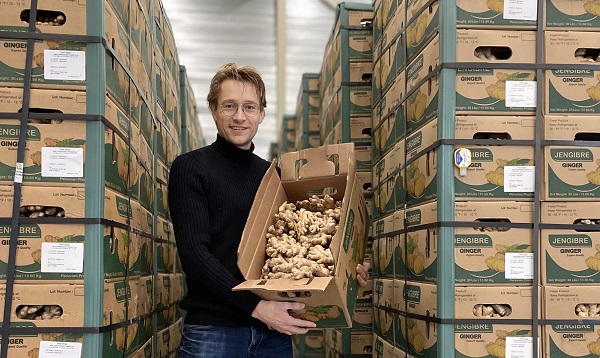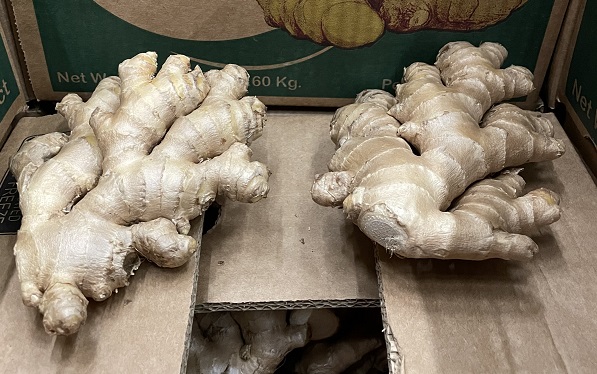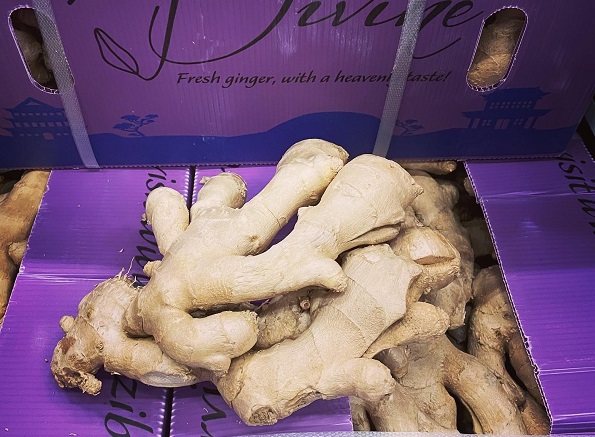“The demand for ginger usually increases as it gets colder,” says Tygho Kampschöer, who owns Fruvexco. This Dutch company focuses on importing exotics, particularly ginger. That demand rises even more around Christmas, when there are many ginger promotions. This exotic is also used in many festive dishes. “The holiday season is important for us.”

Tygho points out that the demand for ginger skyrocketed in 2020. That was due to the global pandemic. The market anticipated this for 2021. Importers brought in a lot of ginger. But the market was slightly calmer. There was a similar decline as in the previous season. “Early in the year, there was plenty of ginger on the market,” he says. That demand is now stable, and rising a little. Shipping is, however, creating challenges. “Sea freight costs have tripled.”
Tygho expects prices to keep gradually rising in tandem with the rising costs. Another challenge in the ginger market is quality. The growing regions have experienced bad weather. So, there are issues with mold and spoilage. “Every year, that and longer transit times make it challenging to ensure quality. Not nearly every supplier has ginger that’s suitable for export to Europe.”

Peru
Peru is not experiencing these problems. This year, for the first time, Fruvexco is importing ginger from there. Kampschöer also gets ginger from China, Brazil, and Thailand. In Peru, the ginger is grown near the jungles. According to the importer, that is particularly decisive for the ginger’s flavor. “The ginger grows a little slower there, in very pure soil. That ensures good quality and a concentrated, spicy flavor.” Fruvexco focuses on avoiding using pesticides. That is, obviously in the organic part of its range.

Ginger from Peru
But also for conventionally grown ginger. “We want to stay below the reporting limit with chemicals. Even conventional ginger sells fine when it’s residue-free.” There is a rising demand for this. Grower involvement in residue-free ginger is also increasing. “Ginger is usually cut directly and used in tea or marinades, for example. Consumers should not have to worry about whether the ginger is food-safe. We took that step years ago and our suppliers are going along with it well,” Tygho concludes.


